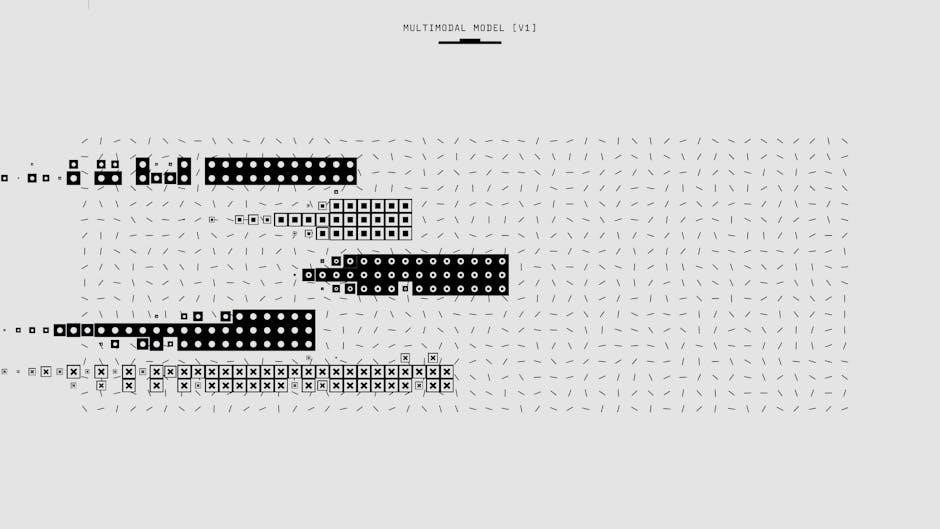Helicoil Tap Drill Charts are essential guides for determining correct drill and tap sizes when installing Helicoil inserts. They ensure precise hole preparation for thread repair.
These charts provide minimum drilling depths, countersinking recommendations, and tap-drill size correlations, helping users avoid common installation mistakes and achieve professional results consistently.
Overview of Helicoil and Its Applications
Helicoil inserts are precision-engineered, coiled wire thread inserts designed to repair damaged or stripped threads in various materials. They are commonly used in industries such as aerospace, automotive, and manufacturing to restore thread integrity quickly and effectively.
These inserts are particularly ideal for soft metals like aluminum and hard metals like steel, offering a durable and reliable solution. Helicoil applications include thread repair, enhancing wear resistance, and providing strong, consistent thread engagement in critical assemblies. Their versatility makes them a popular choice for both industrial and DIY projects, ensuring precise and long-lasting results.
Importance of Using a Helicoil Tap Drill Chart
A Helicoil Tap Drill Chart is crucial for ensuring accurate and precise hole preparation when installing Helicoil inserts. It provides essential data on drill sizes, tap sizes, and minimum drilling depths, preventing common installation errors.
Using the chart helps maintain thread integrity, avoids over-drilling, and ensures proper countersinking. It also guides material compatibility, thread pitch selection, and insert set-down requirements. This ensures strong, durable thread engagement, reducing the risk of thread stripping or insert failure. By following the chart, users can achieve professional-quality results, making it an indispensable tool for both novice and experienced technicians working with Helicoil inserts.
How to Read a Helicoil Tap Drill Chart
Reading a Helicoil Tap Drill Chart involves identifying the thread size and corresponding drill and tap sizes. Start by locating the nominal thread size on the chart, which will guide you to the recommended drill diameter for hole preparation.
Next, verify the thread pitch, as it directly impacts the drill size and tap selection. The chart also provides minimum drilling depths to ensure proper insert seating and countersinking requirements to prevent feather edges.
By aligning the thread size, pitch, and drill size, users can accurately prepare holes for Helicoil inserts, ensuring a secure and durable thread repair. Always refer to the chart for specific material recommendations and installation guidelines.

Understanding Helicoil Drill Charts
Helicoil Drill Charts simplify thread repair by providing precise drill and tap sizes, ensuring proper hole preparation for Helicoil inserts in various materials and applications.
Key Components of a Helicoil Drill Chart
A Helicoil Drill Chart is structured to provide clear guidance, including thread size, drill diameter, and tap specifications. It ensures accurate hole preparation for inserts.
The chart typically lists nominal thread sizes, corresponding drill bit diameters, and tap sizes. It also outlines minimum drilling depths and countersinking requirements for optimal installation.
Additional details may include thread pitch, major and minor diameters, and material compatibility, making it a comprehensive tool for both novice and experienced users.
Drill Size vs. Tap Size: What’s the Difference?
Drill size refers to the diameter of the hole drilled before tapping, while tap size corresponds to the thread dimensions of the Helicoil insert. The drill size is typically slightly smaller than the tap size to ensure proper thread engagement. Using the correct drill size is crucial, as it directly affects the quality of the thread repair. A drill that is too large can result in oversized threads, while a drill that is too small may prevent the tap from cutting properly. Always consult a Helicoil tap drill chart to match the correct drill and tap sizes for your specific application to achieve optimal results.
How to Match Drill and Tap Sizes for Helicoil Inserts
To ensure proper installation of Helicoil inserts, it’s essential to match drill and tap sizes accurately. Start by identifying the nominal thread size of the insert from the Helicoil chart. The chart provides correlations between thread size, drill diameter, and tap size. Select a drill bit that matches the minor diameter of the thread, as specified in the chart. The tap size typically corresponds to the thread size but may vary slightly depending on the pitch and type of thread. Always use the recommended drill and tap sizes to maintain thread integrity and prevent oversized or undersized holes. This ensures a secure and precise fit for the Helicoil insert.

Helicoil Tap and Drill Size Calculations
Helicoil tap and drill size calculations involve precise measurements for thread repair. Charts provide metric and inch size correlations, ensuring proper thread pitch and material compatibility for accurate results.
Calculating Drill Sizes for Metric Helicoil Inserts
Calculating drill sizes for metric Helicoil inserts involves referencing specific charts to ensure accuracy. These charts provide detailed correlations between thread size and required drill bit diameters. For instance, a M6x1.0 thread insert typically requires a drill bit of 5.0mm. The charts also account for thread pitch and material type, ensuring proper fitment. By following the guidelines, users can avoid common issues like oversized holes or insufficient thread engagement. Proper drill size selection is critical for the insert’s longevity and performance in applications ranging from aluminum to hard metals. Always consult the latest Helicoil PDF charts for precise measurements.
Calculating Drill Sizes for Inch Helicoil Inserts
For inch Helicoil inserts, drill sizes are calculated using charts that correlate thread size and pitch to specific drill bit diameters. For example, a 5/16-18 thread insert typically requires a drill bit of 0.373 inches. These charts ensure precise hole preparation, preventing issues like oversized holes or insufficient thread engagement. They also provide minimum drilling depths and countersinking recommendations to avoid feather edges. Material type may influence drill size adjustments, especially for softer materials like aluminum. Always consult the latest Helicoil PDF charts for accurate measurements, ensuring optimal performance and longevity of the inserts in various applications.
Understanding Thread Pitch and Its Impact on Drill Size
Thread pitch, the distance between thread peaks, significantly affects drill size selection for Helicoil inserts. A finer pitch requires a smaller drill bit to maintain thread integrity, while a coarser pitch allows a larger drill. For example, a 1/2-20 thread has a finer pitch than a 1/2-13, necessitating a smaller drill. Charts in Helicoil PDFs detail these relationships, ensuring proper alignment. Incorrect drill sizes can lead to stripped threads or insert failure. Always match the thread pitch to the drill size as specified in the charts, considering material and application requirements for optimal results and durability.

Materials and Their Compatibility
Helicoil inserts are compatible with various materials, including aluminum, steel, and specialized alloys. They prevent thread damage in softer metals and ensure durability in hard materials, enhancing overall performance.
Helicoil Inserts in Aluminum and Soft Metals

Helicoil inserts are widely used in aluminum and soft metals to reinforce stripped or damaged threads. Their unique coil design provides exceptional strength and durability without causing material damage. The inserts are particularly effective in preventing thread stripping in softer materials, ensuring long-lasting performance. Countersinking is often recommended to prevent feather edges and ensure proper seating of the insert.
For aluminum, the recommended drill and tap sizes are specified in Helicoil charts, ensuring precise hole preparation. This compatibility makes Helicoil inserts ideal for applications in automotive, aerospace, and other industries where soft metals are common. Their resistance to wear and corrosion further enhances their suitability for these materials.
Helicoil Inserts in Steel and Hard Metals
Helicoil inserts are highly effective in steel and hard metals, offering exceptional thread reinforcement and resistance to wear. Unlike soft metals, steel requires precise drill and tap sizes, as specified in Helicoil charts, to ensure proper installation. The inserts are particularly useful in high-stress applications, providing a strong, durable thread that withstands heavy loads without stripping.
Their compatibility with hard metals makes them ideal for industrial and automotive applications where strength and reliability are critical. Helicoil inserts in steel maintain their integrity even in harsh environments, offering long-term performance and resistance to corrosion. Proper installation following the chart guidelines ensures optimal results in these demanding materials.
Specialized Materials for Helicoil Applications
Helicoil inserts are also used in specialized materials like titanium, Inconel, and fiber-reinforced plastics, where unique thread repair challenges arise. These materials often require custom drill and tap sizes, as outlined in Helicoil charts, to ensure proper installation without compromising material integrity. The inserts are designed to withstand extreme conditions, such as high temperatures and corrosive environments, making them ideal for aerospace and industrial applications.
In these advanced materials, Helicoil inserts provide a secure, long-lasting thread that resists wear and damage. The charts guide users to select the right tools and techniques, ensuring optimal performance in demanding scenarios. This adaptability highlights Helicoil’s versatility in modern engineering solutions.

Helicoil Installation Best Practices
Helicoil installation requires precise countersinking and maintaining minimum drilling depths to ensure proper thread engagement. Always follow the chart’s guidelines to avoid common mistakes and achieve optimal results.
Countersinking for Helicoil Inserts
Countersinking is a critical step in Helicoil installation to prevent feather edges and ensure smooth tapping. Use a countersink bit to create a chamfer at the hole entrance, promoting proper insert seating. The countersink depth should be minimal, just enough to guide the tap and avoid interference with the surrounding material. Proper countersinking aligns the Helicoil insert correctly, preventing misalignment and ensuring even thread engagement. Refer to the Helicoil tap drill chart for specific countersink angles and depths, typically 60° to 90°, depending on the insert type. Improper countersinking can lead to poor insert seating or misalignment, compromising the repair’s integrity. Always follow chart guidelines for reliable results.
Minimum Drilling Depths for Helicoil Inserts
Minimum drilling depths for Helicoil inserts are crucial to ensure proper thread engagement and prevent insert protrusion. The depth must accommodate the insert’s length and allow for chip clearance during tapping. Helicoil charts specify minimum depths based on thread size and pitch. For example, a 1/2-20 insert may require a drilling depth of 0.75 inches. Insufficient depth can lead to incomplete thread engagement, reducing the insert’s effectiveness. Always refer to the Helicoil tap drill chart to confirm the exact depth requirements for your specific application; Proper drilling depth ensures the insert is seated correctly, providing a secure and durable thread repair. Adhering to these guidelines helps maintain the structural integrity of the repaired component.
Avoiding Common Mistakes During Installation
Avoiding common mistakes during Helicoil installation is critical for ensuring thread integrity and functionality. Oversizing the drill hole is a frequent error, as it can lead to loose inserts and weakened threads. Additionally, insufficient drilling depth may result in incomplete thread engagement, reducing the insert’s effectiveness. Using the wrong tap size or type, such as standard taps instead of Helicoil-specific ones, can damage the insert or surrounding material. Failure to countersink properly may cause feather edges, affecting the insert’s seating. Always refer to the Helicoil tap drill chart to ensure accurate drill and tap sizes, and follow recommended installation practices to avoid these pitfalls. Proper technique and adherence to guidelines are essential for a successful repair.

Helicoil Tap and Drill Tools
Essential tools include specialized taps, drill bits, and installation tools designed for precise Helicoil insert installation, ensuring proper thread repair and minimizing errors during the process.
Essential Tools for Helicoil Installation
Installing Helicoil inserts requires specific tools, including high-speed steel (HSS) taps and drill bits, designed to handle the precise threading and drilling needed for the inserts.
A spiral point tap is often recommended for through-holes to evacuate chips effectively, while a bottoming tap is suitable for blind holes to ensure accurate thread depth.
Additionally, a slide gauge is necessary to measure the number of turns required for proper insert seating, ensuring a secure and durable thread repair.
Using the correct tooling ensures the Helicoil insert is installed correctly, maintaining thread integrity and preventing future issues.
Choosing the Right Tap for Helicoil Inserts
Selecting the appropriate tap for Helicoil inserts is crucial to ensure proper thread repair and durability. Spiral point taps are ideal for through-holes, as they effectively evacuate chips during tapping, reducing the risk of thread damage.
For blind holes, bottoming taps are recommended to achieve precise thread depth without over-tapping. The tap must match the thread size and pitch specified in the Helicoil drill chart to ensure compatibility with the insert.
Using the correct tap type and size guarantees a secure fit for the Helicoil insert, preventing common issues like stripped threads or loose connections.
Always refer to the Helicoil tap drill chart for specific recommendations tailored to your application.
Drill Bit Selection for Helicoil Applications
Proper drill bit selection is critical for successful Helicoil insert installation. Use high-speed steel (HSS) or carbide bits for optimal performance. The drill bit must match the size specified in the Helicoil tap drill chart to ensure accurate hole preparation.
A sharp drill bit is essential to prevent uneven holes or oversized diameters, which can lead to improper thread engagement. Always reference the Helicoil chart to confirm the correct drill size for your specific insert and thread pitch.
Using the wrong drill bit can result in installation errors, so double-check the chart before drilling. This ensures a precise fit and maximizes the durability of the Helicoil insert in the repaired thread.

Troubleshooting Helicoil Installations
Common issues include stripped threads, incorrect drill sizes, and tap damage. Always consult the Helicoil tap drill chart to verify sizes and procedures for reliable results.
Common Issues with Helicoil Taps and Drills
One of the most frequent problems encountered during Helicoil installations is the use of incorrect drill or tap sizes, which can lead to thread misalignment or damage. Another issue is inadequate countersinking, causing feather edges that interfere with the insert’s seating. Additionally, insufficient drilling depths can result in incomplete thread engagement, weakening the repair. Using standard taps instead of specialized Helicoil taps is another common mistake, as they may not properly cut the thread geometry required for the insert. Improper tap handling, such as incorrect RPM or feed rates, can also cause taps to break or become damaged during the process.
Fixing Damaged or Stripped Threads
Helicoil inserts are a reliable solution for repairing stripped or damaged threads. The process begins by drilling out the damaged area to the recommended diameter specified in the Helicoil tap drill chart. After drilling, a Helicoil tap is used to create the new thread pattern. The insert is then screwed into place and the excess tang is broken off, leaving a strong, durable thread. This method ensures minimal material removal and restores the original thread strength. Proper alignment and adherence to the chart’s specifications are crucial for a successful repair, preventing further damage or dysfunction.

When to Use Spiral Point Taps for Helicoil
Spiral point taps are ideal for Helicoil applications requiring chip evacuation, especially in blind holes or materials producing long chips. They effectively push chips forward, preventing clogging. Use them for materials like aluminum, where chips can be stringy. The drill depth should be increased to accommodate chip clearance, ensuring smooth threading. Spiral point taps minimize the risk of tap breakage and improve thread quality, making them a preferred choice for critical repairs. Always consult the Helicoil tap drill chart to determine the correct tap type and size for your specific application, ensuring optimal results and durability in thread restoration.

Helicoil Tap Drill Chart PDF Resources
Helicoil Tap Drill Charts in PDF format are readily available online for download, enabling easy access and printing for quick reference during installation and repairs.
Where to Find Helicoil Drill Charts Online
Helicoil drill charts are accessible through various online resources, including the official Stanley Engineered Fastening website and trusted fastener distributors like Fastenal and McMaster-Carr. Additionally, technical forums and hardware supplier sites often provide downloadable PDFs for quick reference. These charts are typically available free of charge, offering detailed specifications for both metric and inch systems; Users can search for “Helicoil tap drill chart PDF” to find comprehensive guides that include drill sizes, tap sizes, and installation recommendations. Ensure the source is reputable to guarantee accuracy and reliability for your threading projects.
Downloading Helicoil Charts for Offline Use
Helicoil drill charts in PDF format can be downloaded from official sources like Stanley Engineered Fastening’s website or trusted distributor sites. Many technical forums and hardware suppliers also offer these charts for free. To download, search for “Helicoil tap drill chart PDF” and select a reputable source. Once downloaded, save the PDF to your device for offline access. This allows you to reference critical drill and tap sizes, thread specifications, and installation guidelines without internet connectivity. Ensure the PDF is printed or saved in a secure location for easy access during projects. Always verify the chart’s authenticity to avoid errors in your threading operations.
Printing and Referencing Helicoil Charts
Printing Helicoil charts ensures easy access during projects, especially in workshops or areas without reliable internet. Use a high-quality printer to maintain clarity, and consider laminating the chart for durability. When printing, ensure the scaling is set to “actual size” to preserve measurements. Referencing the chart is straightforward: locate the thread size, identify the corresponding drill and tap sizes, and follow the recommended depths. Highlighting frequently used sizes with a marker can improve efficiency. Store the chart in a conspicuous location, such as on a workshop wall or in a toolbox, for quick consultation. Regularly update your printed chart to reflect any revisions in Helicoil specifications.